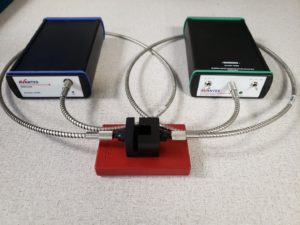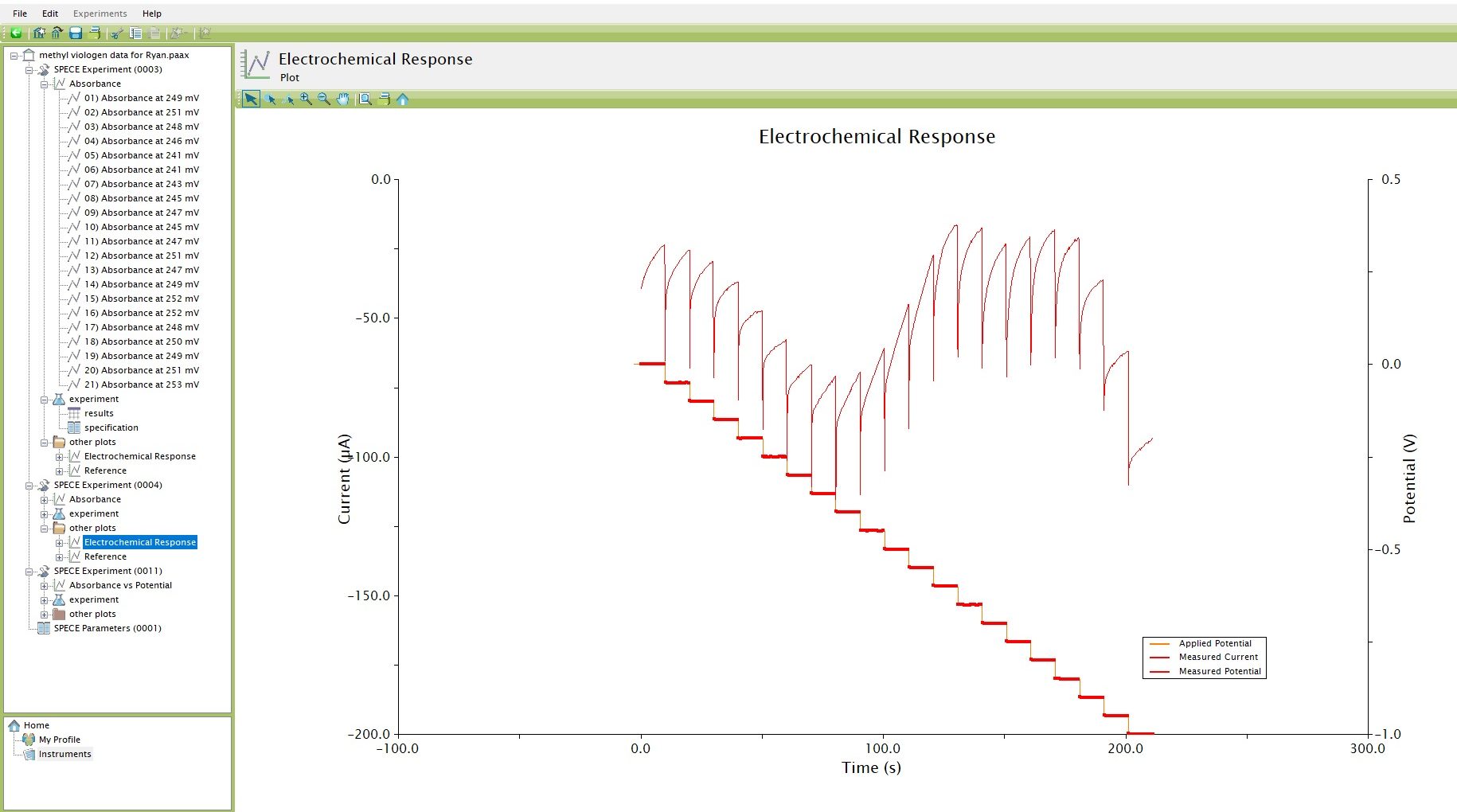VIS/NIR Spectroelectrochemical Response
Background
This spectra feature was provided by Pine Instruments as an example of a spectroelectrochemistry application that measures electrochemical response over a range of applied electrical potential and correlated against energy absorption by wavelength. Researchers Greenlee, et al. were measuring the electrochemical response of PMDI’s that were functionalized with 4-(dimethylamino) pyridinium (DMAP+) groups. The functionalization resulted in a shift in the reduction potential of the PMDI. The electrochemical technique cyclic voltammetry was used to determine the new reduction potentials of the functionalized PMDIs.
Experiment Parameters
| Wavelength Range | 400nm to ~1000nm |
| Electrical Potential Range | -48.9 mV to -449 mV |
| Time | 300 Seconds |
System Description
In such an experiment there three major components, the spectroscopy equipment (spectrometer and light source), the potentiostat, and the spectroelectrochemical cell. Researchers typically use an optically transparent electrode, made out ITO or a platinum mesh, as the working electrode; Pine Research Instrumentation developed a honeycomb electrode designed to optimize both to rapidly electrolyze the molecule and increase its absorbance compared to the more traditional ITO and platinum mesh electrodes. A potentiostat is used to apply a potential to the electrode to induce an electron transfer. Then the researcher collects UV/Vis spectra of the oxidized or reduced species using their light source and spectrometer.
The instruments used to collect their data include:
The AvaSpec-ULS2048 is particularly useful in time-critical situations thanks to its exceptional response speed. In this configuration, a UA grating was implemented to give the spectrometer a broadband range of 200 nm to 1100 nm. The detector in this spectrometer has a native UV response, and the configuration includes a linear variable and a 50-micron slit.

The AvaLight-DHc light source has independently controllable deuterium and halogen light sources. Deuterium emits light between 200 and 550 nm, whereas halogen emits light of up to 2500 nm, providing you with adequate light between 200 and 2500 nm for nearly all absorbance chemistry applications. Recommended for small pathlength measurements or direct attachment to a cuvette holder such as the CUV-DA, due to its relatively low output energy. The integrated TTL-shutter makes saving a dark measurement very simple via AvaSoft, and allows for faster measurements as the bulb does not have to be turned off, then on again with the warm-up period.
- (2) 600-micron diameter fibers, 2 meters long each
- Cuvette holder
- Pine Research WaveNow potentiostat -benchtop, research-grade electrochemical workstations
Data on Absorption and Electrochemical Response
Absorption Response vs. Wavelength and Electrochemical Response.
Read the Published Research from the American Chemical Society
Test Drive this System
Request a Test Drive of this system for your own spectroelectrochemistry application and design the ideal system for your application before you buy!
 My Cart
My Cart 


